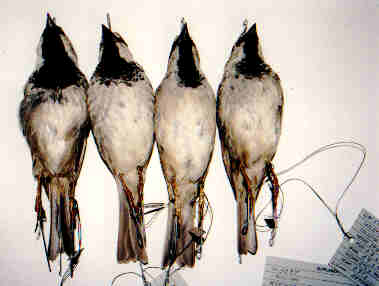How to Impress Girls
I am a huge fan of BBC nature documentaries hosted by David Attenborough. I can't get enough. I stumbled upon an episode of Blue Planet one night in college and couldn't look away for the entire show. I immediately went on Amazon.com and
bought the whole set (you should too, honestly).
When I got heavily into birds, one of the first things I did was buy, sight unseen, the entire BBC's Life of Birds series. Like the other BBC/Attenborough series, LoB covers animals from all over the world and in several different categories covering different types of birds and issues in the life-cycle of birds. There are some amazing shots (especially the out-of-control Asian eagle battle...you have to see it to believe it), and the series reveals things about common birds that I never knew before. Most memorably are the segments on Brown Pelicans and Common Moorhen ignoring and/or killing their own young to make way for more dominant siblings. It's intense and incredibly interesting.
Another segment features an interesting note on some common birds that you, gentle DC reader, have most likely seen today. In fact, I GUARANTEE that if you live within 10 miles of the District of Columbia and have opened your eyes today, you've seen this bird. It's the House Sparrow!
Attenborough told me, in his delightful accent, that the black bib on male house sparrows is more than just a decoration, but is in fact a symbol of a hierarchical system within each House Sparrow group. Simply, the bigger the bib, the more dominant the bird. It's pretty interesting.
Compare the bibs on the birds in this photo:

See how the birds have different bib sizes? Well the bird with the biggest is the most dominant and the others fall in line according to bib size. A good way to think of it, stolen from Life of Birds, is to think of the bird with the biggest bib as the general, the next as a captain and right on down to a lowly private.
It turns out that the bib size is more than just a decoration, too. Borrowing liberally from and excellent
House of Bird Research page, I can tell you that a large bib corresponds with a large set of testes (which give a better chance at fertilization) and a better immune system (which are also a genetic benefit). So there you go. Sparrows with larger bibs are healthier and studlier, and so get all the females and are generally more awesome.
The moral of the story is: instead of being annoying and complaining about how every bird in DC is a house sparrow, you can now impress girls with your ability to instantly compare House Sparrow testicle sizes. I'm pretty sure that's how my parents first met, I'm sure it'll work for you too.



